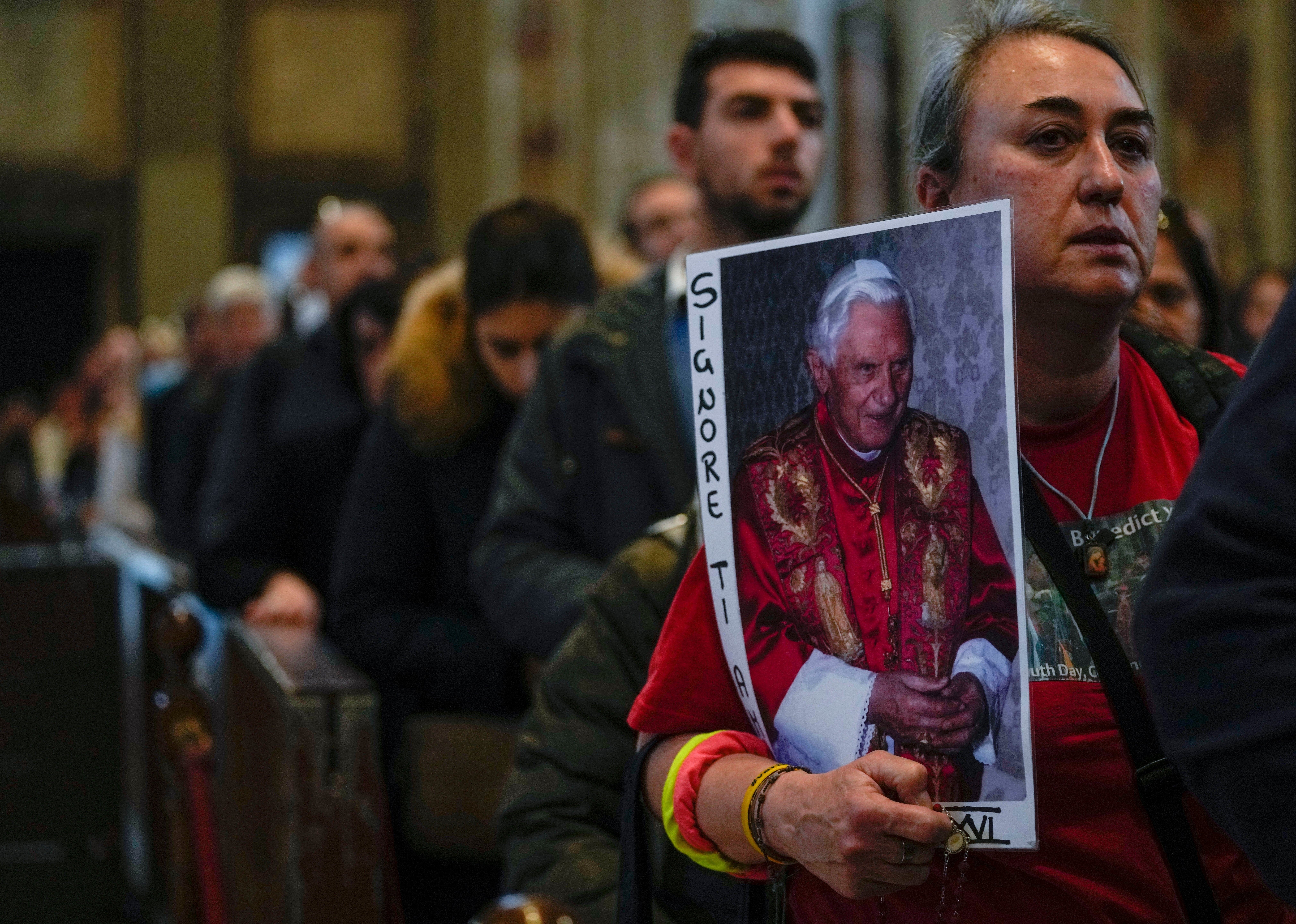EXPLAINER: Benedict's funeral to be simple, but with pomp
Pope Benedict XVI held one of the world’s highest—profile positions but once expressed a desire to be “hidden to the world.”

Pope Benedict XVI held one of the world's highest—profile positions but in his final years expressed a desire to be “hidden to the world.” While his body had been on display this week for three days, his funeral Thursday will at least in part respect his wishes for simplicity but also feature some of the pomp reserved for a leader of the Roman Catholic Church.
Some rites will take place out of the public eye. There will be other forms of tradition-laden ceremony in St. Peter’s Square before tens of thousands of people, including national leaders and representatives of various countries' royal families.
Benedict died at 95 on Dec. 31 in the monastery on the Vatican grounds where he had spent nearly all of his decade in retirement, his days mainly devoted to prayer and reflection. This week, as the Catholic Church bids farewell to its 265th pontiff, it will use a mixture of rituals — some ancient, some tweaked for modern times.
Some of the details of the Vatican’s formal farewell.
WHAT COFFINS WILL BE USED?
On Wednesday evening, after the last visitors left St. Peter’s Basilica, where Benedict’s body had been on display, it was to be placed into a coffin hewn from cypress trees in a strictly private moment.
Before the cover is placed atop the coffin, objects identified with Benedict's nearly eight-year-long papacy will be placed inside, the Vatican said. They include medallions and Vatican coins bearing his image that were minted during his papacy and circulated in euro dominations.
A one-page written account of his papacy — known in Italian as a "rogito,'' a word indicating an official deed — is rolled up and slipped inside a cylindrical tube, then placed inside the coffin. Also being buried with Benedict are the palliums, distinguished hallmarks of his clerical career. A slender stole, fashioned from lambs wool by nuns at a cloister in Rome, it is a potent symbol of popes, who are also the bishop of Rome, and, as such pastors of the flock of Catholic faithful.
Benedict had an image of a pallium integrated into his papal emblem. The stole is also bestowed on cardinals and on archbishops. Benedict in his career served as archbishop of Munich in his native Germany and was elevated to cardinal's rank by St. Pope Paul VI in 1977.
At the funeral’s conclusion, Benedict coffin returns to the basilica and is brought down to the grottoes under the main floor. There, near the underground crypt where he chose as his final resting place, the cypress coffin will be placed inside one made of zinc. That coffin in turn will be placed inside a third one, made of oak.
HOW WILL THE FUNERAL UNFOLD?
The coffin will return to the public's view about 8:45 a.m. (0745GMG) Thursday when it is carried out of the basilica. The faithful in St. Peter's Square, who are expected to number at least 60,000, have been invited to recite the rosary aloud. Pope Francis will preside over the funeral, taking his place in front of a canopied altar, and delivering the homily and key invocations.
But celebrating the Mass at the altar will be Italian Cardinal Giovanni Battista Re, the dean of the College of Cardinals. For Benedict's funeral, Francis will lead the final rites. Those involve reciting a formal farewell known in Latin as “Ultima Commendatio et Valedictio” and sprinkling the remains with blessed water and incense.
Most of the liturgy in the Mass mirrors those in funerals for reigning pontiffs. There will be one notable exception: past funerals, including John Paul's in 2005, included special "suppliche,'' or prayful implorations — featuring a long litany of the names of saints — reflecting a pontiff's role as Bishop of Rome and also head of the Eastern rite churches.
But because Benedict had retired from the papacy before he died, no such implorations will ring out across the square.
WHERE WILL BE BENEDICT'S FINAL RESTING PLACE BE?
Benedict's remains will go into a crypt where John Paul's tomb had rested. John Paul’s remains were moved upstairs from the grottoes and into the main basilica for his 2011 beatification during Benedict's papacy. Pope Francis declared the Polish pontiff a saint in 2014.
___
Nicole Winfield contributed reporting.
___
More on the death of Pope Emeritus Benedict XVI: https://apnews.com/hub/pope-benedict-xvi
Bookmark popover
Removed from bookmarks